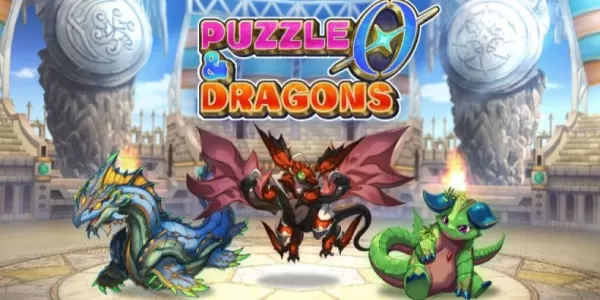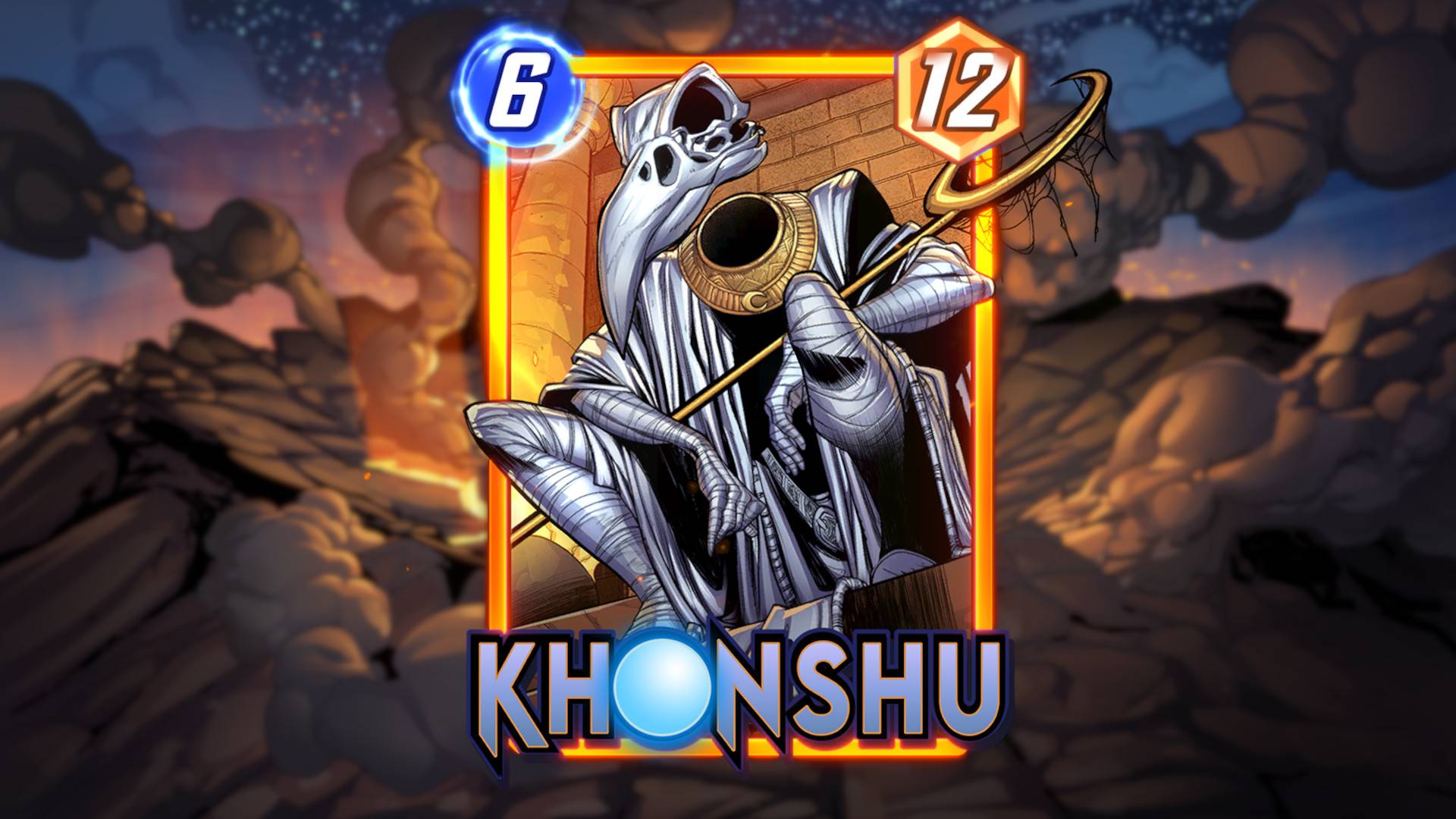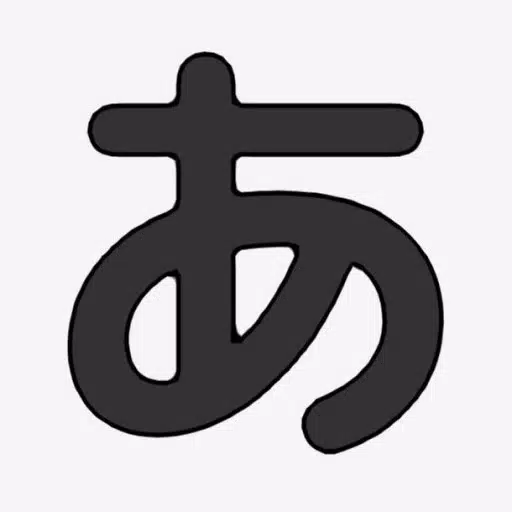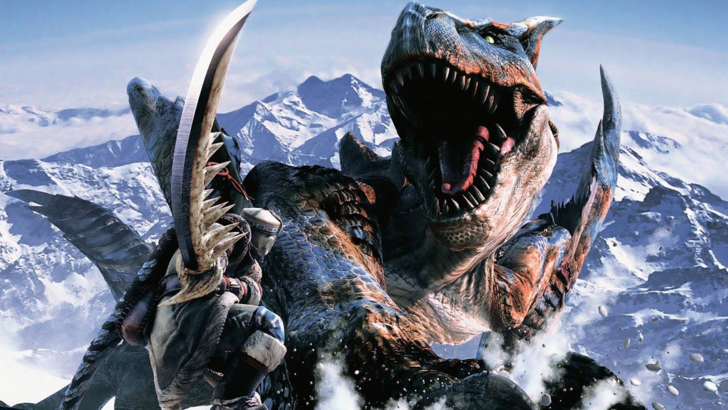
Monster Hunter is renowned for its diverse weapon arsenal and captivating gameplay. But did you know even more weapons exist, absent from recent installments? Explore the rich history of Monster Hunter weapons below.
← Return to Monster Hunter Wilds' main article
History of Weapon Types in Monster Hunter
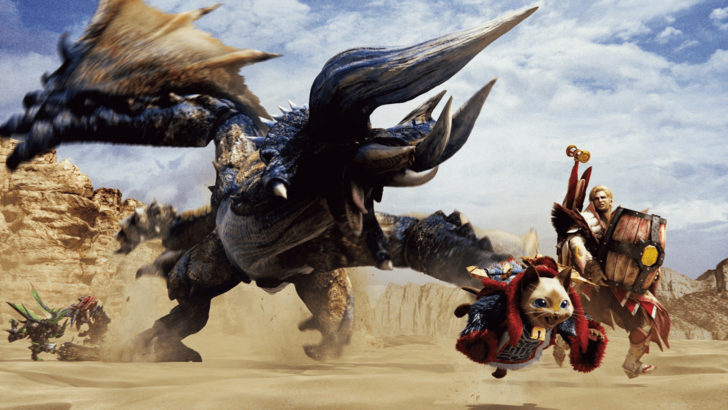
Monster Hunter, celebrating over two decades since its 2004 debut, is celebrated for its diverse weapon selection. Monster Hunter Wilds boasts fourteen distinct weapon types, each demanding mastery of unique strengths, weaknesses, movesets, and mechanics.
The evolution from the original Great Sword to its modern iteration is dramatic, showcasing the series' continuous refinement. Furthermore, several older weapons, never released in the West, add to the franchise's rich history. Let's delve into this history, focusing on the hunter's most crucial equipment: the weapon.
First Generation
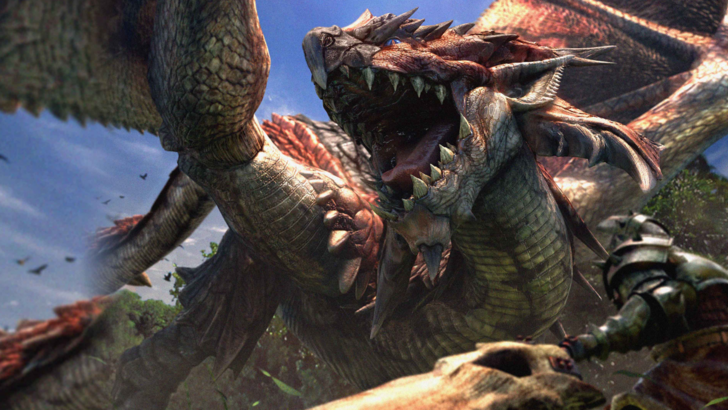
These weapons, introduced in the original Monster Hunter and its variants, are the series' foundational pillars. They've endured, evolving with refined movesets and mechanics.
Great Sword
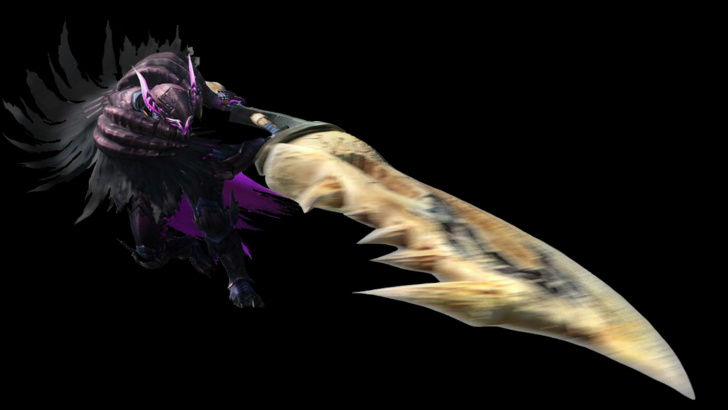
Arguably the franchise's most iconic weapon, the Great Sword debuted in 2004. Its immense damage potential comes at the cost of slow attacks and movement—as sluggish as a charging Gravios. The massive blade can even function as a shield, albeit at the expense of stamina and sharpness.
Initially, the Great Sword favored hit-and-run tactics and precise spacing. Though infinite combos were possible, slow animations discouraged this. Uniquely, the blade's center dealt more damage than its tip or hilt.
Monster Hunter 2 introduced the iconic Charged Slash, a three-level charge attack culminating in a devastating swing. This remains a cornerstone of the weapon's appeal.
Subsequent games built upon this charging mechanic, adding finishers and smoother combo transitions. Monster Hunter World's shoulder tackle, for instance, allows for quicker access to charged attacks.
The Great Sword offers a low skill floor, high skill ceiling. Mastering its hit-and-run style is relatively easy, but maximizing damage through precise True Charged Slashes requires significant skill.
Sword and Shield
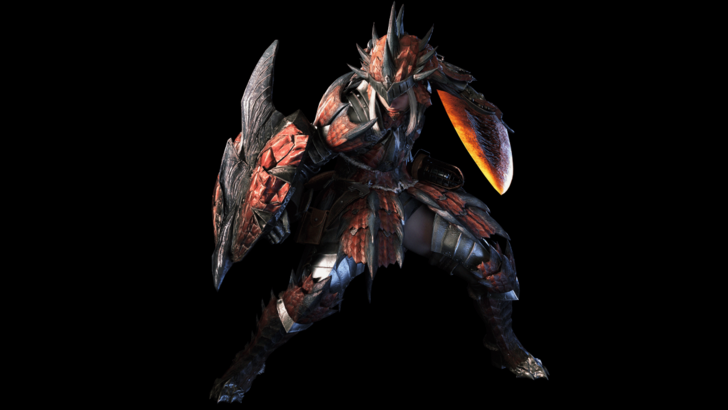
The Sword and Shield embodies versatility. Its balanced design compensates for lower single-hit damage with quick combos, blocking capabilities, high mobility, and utility. Initially considered a beginner weapon, its complexity has grown with each installment.
Early iterations emphasized quick slashes, combos, and mobility. Monster Hunter 2 added the ability to use items while the weapon remained drawn.
Later games expanded the moveset, introducing the shield bash combo (Monster Hunter 3), backstep and jumping attacks (Monster Hunter 4), and the Perfect Rush combo and aerial finishers (Monster Hunter World and Monster Hunter Rise).
Despite its short range and moderate damage, the Sword and Shield is a true jack-of-all-trades. Its infinite combo potential, quick attacks, evasiveness, powerful finishers, and defensive blocking capabilities often overshadow its seemingly simple design. Its true depth is revealed only through extended use.
Hammer
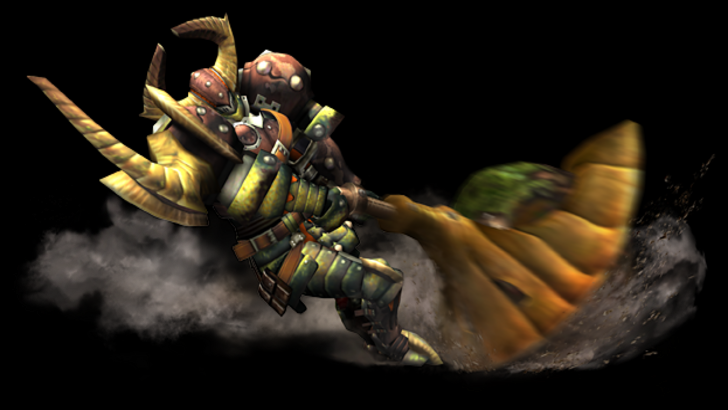
One of two blunt weapons (incapable of severing tails), the Hammer excels at breaking parts, particularly heads. Following Monster Hunter 2, it became renowned for its KO potential through repeated head strikes.
Its gameplay, similar to the Great Sword, relies on hit-and-run tactics. However, it boasts surprisingly high mobility for its appearance and lacks a blocking capability. Its unique charge mechanic allows movement while charging.
Its moveset remained largely unchanged until Monster Hunter World and Monster Hunter Rise, which introduced the Big Bang and Spinning Bludgeon attacks, enhancing its offensive capabilities beyond its signature swing and Superpound.
Two modes—Strength and Courage—were added, subtly altering charge attacks and effects. Effective Hammer use requires mastering mode switching based on monster matchups and maintaining momentum while charging.
The Hammer's objective is straightforward: target the head and KO the monster. This seemingly simple goal demands skill, rewarding players with devastating charged attacks and combo finishers.
Lance

The Lance embodies the adage "a good offense is a great defense." Its long reach allows for ranged attacks, while its large shield blocks most attacks, even some deemed unguardable with proper skill investment. Despite limited mobility and attacks while drawn, its damage output is substantial.
Its gameplay resembles boxing, emphasizing pokes from a safe distance. Primary attacks involve forward and upward thrusts, chainable up to three times. A counter mechanic was added, further reinforcing its defensive identity. Running charge and shield bash attacks aid in closing distance.
Often dismissed as "boring" due to its less flashy animations, the Lance uniquely rewards players for standing their ground. It transforms the hunter into a tank, exceeding even the Gunlance in defensive capabilities.
Light Bowgun
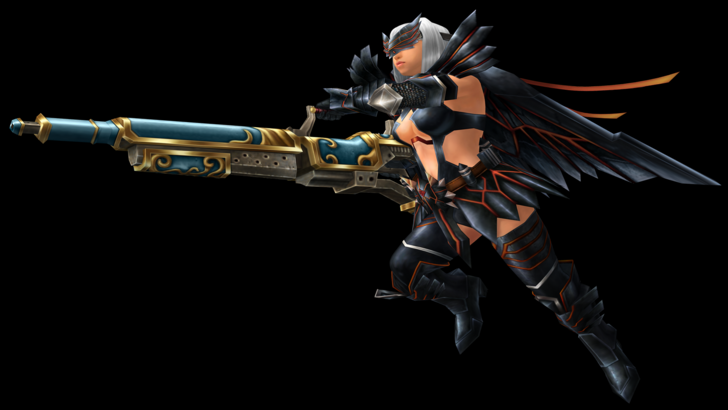
The Light Bowgun, a first-generation ranged weapon, remains a staple. Its mobility and fast reload speed make it easier to handle and safer than its heavier counterpart. Its smaller size results in faster reloading, sheathing, and dodging.
The trade-off for this mobility is limited ammunition. Customization options, including barrels, silencers, and scopes, allow for tailored builds.
Unlike the Heavy Bowgun's powerful ammunition, the Light Bowgun's strength lies in its ability to Rapid Fire certain ammo types. This, combined with its ease of use, allows it to outperform other ranged weapons.
Monster Hunter 4's "Critical Distance" mechanic added depth, making optimal damage dependent on both distance and ammunition type.
Monster Hunter World introduced Wyvernblast (ground-planted bombs) and a slide maneuver after shooting, enhancing its run-and-gun style.
The Light Bowgun has evolved beyond its "weaker" counterpart status. Its simple design has become more robust, maintaining ease of use while keeping pace with other ranged weapons in mechanics and specialization.
Heavy Bowgun
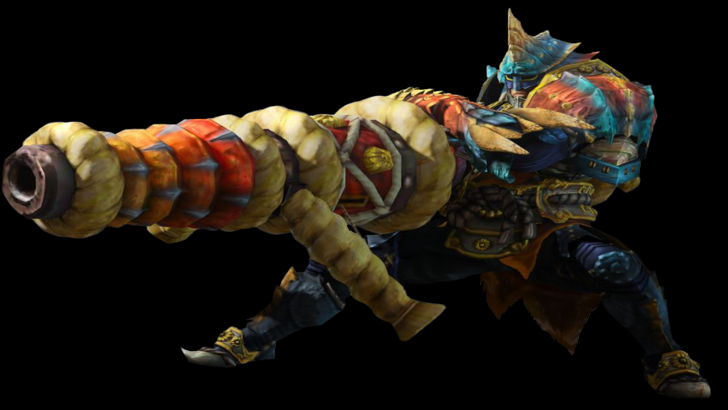
The Heavy Bowgun, the premier first-generation ranged weapon, delivers high damage and access to specialized ammunition. Its size and weight, however, significantly restrict mobility while drawn.
While the Light Bowgun prioritizes mobility, the Heavy Bowgun offers versatility through its broader ammunition selection. Its slow movement (walking only while drawn) is offset by the option to equip a shield.
Its design remained largely consistent, serving as powerful artillery or support. Limited mobility could lead to downtime if targeted by monsters.
Monster Hunter 3 introduced Siege Mode, allowing for continuous shelling without reloading. Monster Hunter World added Wyvernheart (minigun-like) and Wyvernsnipe (powerful single-shot) special ammo, independent of the hunter's inventory and replenishing over time.
Both bowguns require careful ammunition management, as stronger shells must be crafted (not bought). The Heavy Bowgun's core identity remains unchanged: powerful ammunition demands powerful weaponry.
Dual Blades
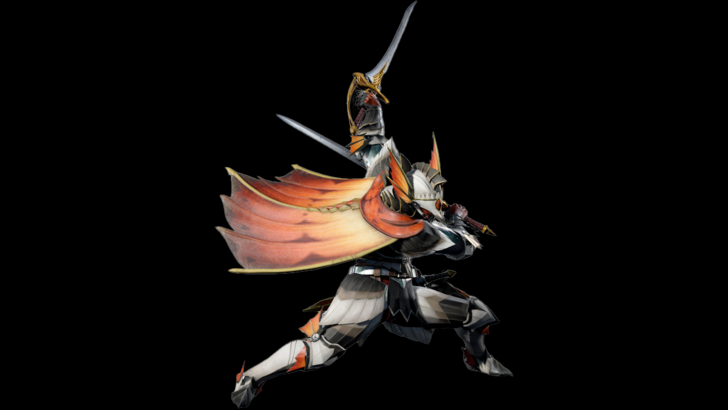
The flashy Dual Blades prioritize speed, excelling at inflicting status ailments and elemental damage due to their multi-hit attacks. Interestingly, despite being a first-generation weapon, they were only included in the Western release of the original Monster Hunter.
Speed and fluid combos define the Dual Blades, surpassing the Sword and Shield in pure offense. Individual attacks are weak, but their rapid succession delivers significant damage.
Demon Mode, a temporary state boosting damage and access to additional attacks, is a core mechanic. Stamina drains continuously while in Demon Mode.
Subsequent releases refined this design. Monster Hunter Portable 3rd and Monster Hunter 3 Ultimate introduced the Demon Gauge, filling with each attack in Demon Mode. A full gauge activates Archdemon Mode, a powered-up state with enhanced attacks and evasion without stamina drain.
The Demon Dash, a unique movement tool, allows rapid traversal. Monster Hunter Generations Ultimate's Adept Hunter Style linked perfect dodges to the Demon Dash, granting damage buffs and enhanced dashing capabilities.
While the core gameplay remains consistent, refinements to powered-up states and the Demon Dash have enhanced the weapon's offensive capabilities. Archdemon Mode fundamentally changed the weapon's strategic use.
Second Generation
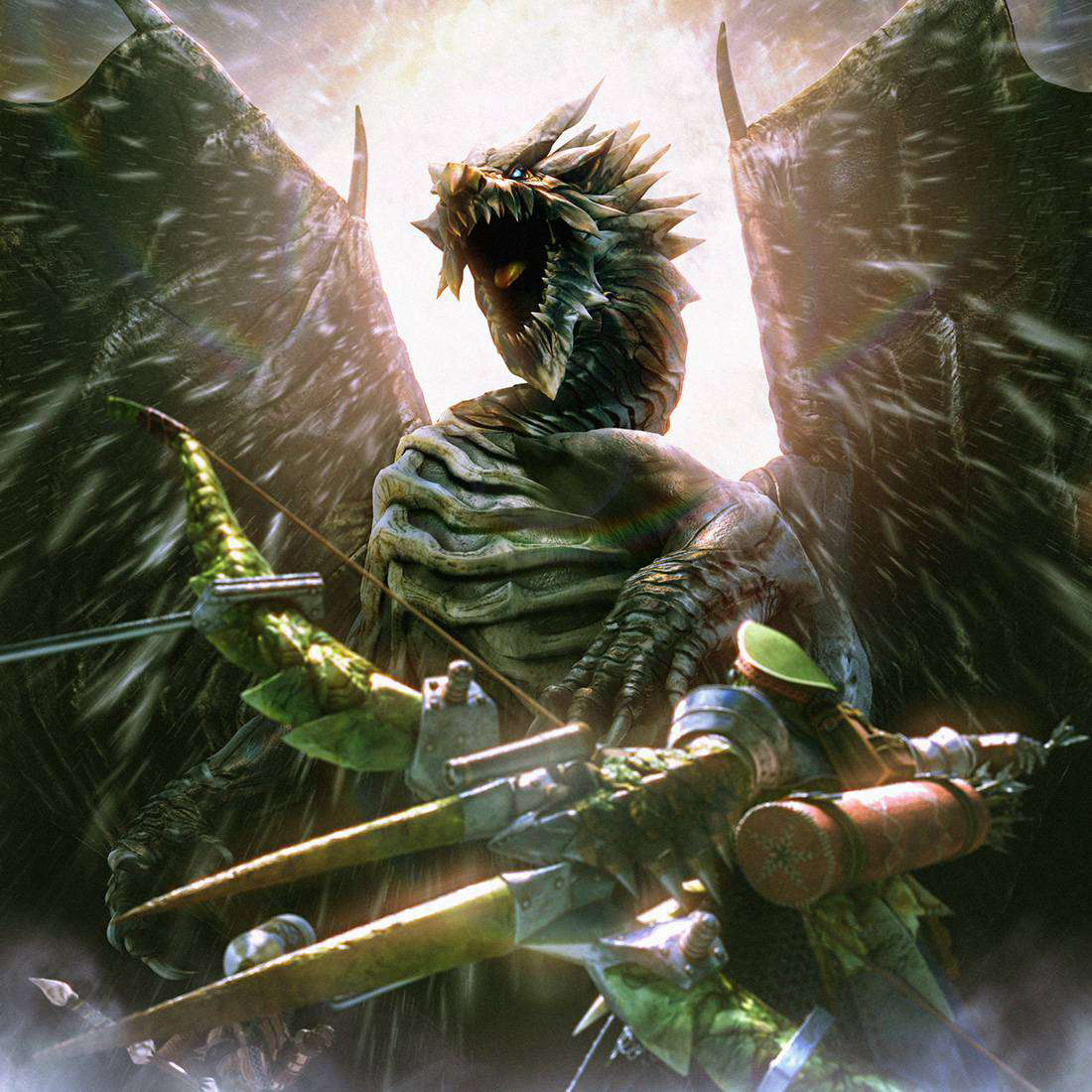
Introduced in the second generation, these weapons are cousins to their first-generation counterparts, sharing functional similarities but boasting unique movesets and mechanics.
Long Sword

The Long Sword is known for its fluid combos, high damage, and intricate mechanics. Cosmetically similar to katanas among first-generation Great Swords, it received its own moveset in Monster Hunter 2. While functionally similar to the Great Sword (high-damage slashing), it offers greater mobility and more fluid combos, but sacrifices blocking capabilities.
The Spirit Gauge, filled by landing attacks, activates the Spirit Combo, a powerful damage-dealing sequence.
Monster Hunter 3 added Spirit Roundslash, a finisher that increases the Spirit Gauge to three levels (white, yellow, red), each granting progressively stronger attack buffs.
Monster Hunter World introduced the Spirit Thrust Helm Breaker finisher and Foresight Slash, a parry attack chainable into the Spirit Combo and Roundslash, accelerating Spirit Gauge accumulation.
Iceborne added Iai Stance, featuring Iai Slash and Iai Spirit Slash (another parry attack).
The Long Sword remains combo-oriented, but its design has shifted towards counter-based gameplay. The Spirit Gauge remains central, but parries and counters facilitate quicker access to its peak potential.
Hunting Horn
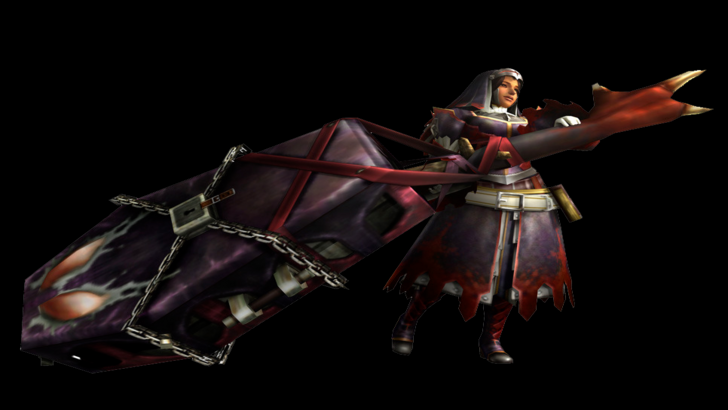
The Hunting Horn, a support weapon introduced in Monster Hunter 2, utilizes Recital, a unique mechanic combining colored notes to create beneficial effects (attack/defense buffs, healing, etc.). Like the Hammer, it deals impact damage, primarily targeting the head for stuns, but with lower overall damage due to its support capabilities.
Changes revolved around Recital until Monster Hunter Rise, which overhauled the weapon. Improvements included playing notes while attacking (Monster Hunter 3 Ultimate), song queuing (Monster Hunter World), and Echo Notes (finishers providing buffs in specific areas).
Monster Hunter Rise simplified Recital, requiring only double-tapping a button, halving the song list, and automating buffs. This change proved divisive, simplifying the weapon but potentially diminishing its complexity.
Gunlance

A hybrid of Lance and Bowgun, introduced in the second generation, the Gunlance functions like a Lance (large shield, piercing lance) but adds explosive shelling. Ammunition is unlimited, replenishing upon reloading.
Visually similar to the Lance, its attacks are primarily slashing, unlike the Lance's piercing attacks. Wyvern's Fire, a chargeable explosive attack, serves as a finisher. Shelling types vary between Gunlances, affecting attack power and explosions.
Monster Hunter 3 emphasized its aggressive nature, introducing a quick reload mechanic for infinite combos, Full Burst (downward slam), and additional shell charging.
Monster Hunter X introduced the Heat Gauge, increasing physical attack damage with shelling use, but overheating the weapon.
Monster Hunter World added Wyrmstake Shot, an impaling explosive finisher.
The Gunlance's unique reloading mechanics, aggressive playstyle, and shelling management differentiate it from other melee weapons.
Bow

The most agile ranged weapon, the Bow specializes in close-to-mid-range combat, utilizing mobility and combo-based attacks similar to melee weapons. Chargeable attacks increase arrow count. Coatings enhance damage or inflict elemental/status effects.
Hit-and-run tactics and multi-hit attacks for high elemental damage are key. Shot Types, present in earlier games, were simplified in Monster Hunter World, becoming integrated into the universal moveset.
Monster Hunter Rise reintroduced Shot Types, tied to charge levels.
Monster Hunter World's overhaul emphasized aggressive, combo-heavy ranged gameplay, distinct from the Bowgun's point-and-shoot style.
Third and Fourth Generation
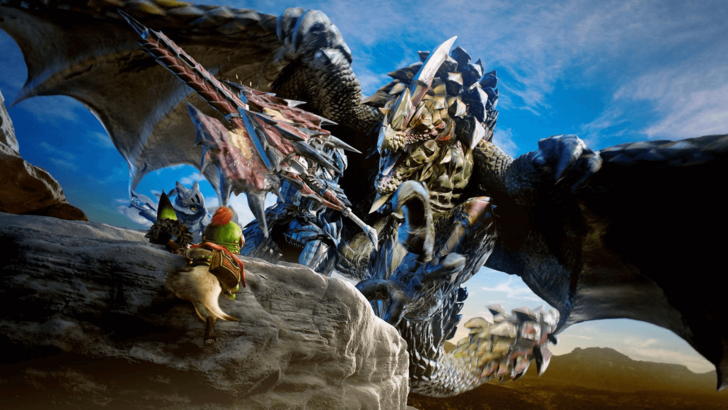
These weapons, introduced in Monster Hunter 3 and Monster Hunter 4, are morphable weapons, transforming during combos, except for the Insect Glaive, which utilizes a unique buff collection mechanic.
Switch Axe

The Switch Axe (Monster Hunter 3) features Axe and Sword modes. Initially unlockable through a quest, it became readily available in later installments.
Balancing offense between modes is crucial. Axe Mode offers greater range, mobility, and an infinite stamina-based combo. Sword Mode delivers higher damage, utilizing phials and the Elemental Discharge finisher.
Monster Hunter World's Amped state, activated by Sword Mode hits, empowers attacks. Monster Hunter Rise extended Amped to both modes, encouraging form switching.
The Switch Axe's form-swapping and explosive combat style set a new standard for weapon design.
Insect Glaive

The Insect Glaive (Monster Hunter 4) prioritizes aerial combat. A Kinsect (controlled insect) collects essences granting buffs. Mounting monsters is facilitated by its aerial capabilities.
Its core gameplay revolves around collecting red, white, and orange essences for attack, mobility, and defense buffs.
Monster Hunter World: Iceborne added Descending Thrust, an air-to-ground finisher. Monster Hunter Rise simplified Kinsect upgrades and introduced new types (Normal, Assist, Powder, Speed).
The Insect Glaive's buff system and aerial prowess make it unique and accessible, while its upgrade system has seen significant streamlining.
Charge Blade
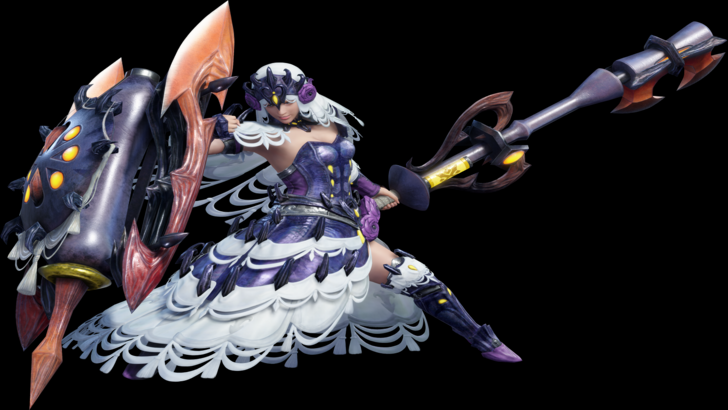
The Charge Blade (Monster Hunter 4) is another transforming weapon (Sword and Axe modes), utilizing Sword Mode to charge phials and Axe Mode to unleash Amped Elemental Discharge. Its complexity makes it challenging to master.
Guard points allow for phial charging while defending. Phial types vary between weapons. Mastering transitions between modes and utilizing guard points effectively is crucial.
The Charge Blade's versatility and complex mechanics reward skilled players.
Will There Be More?
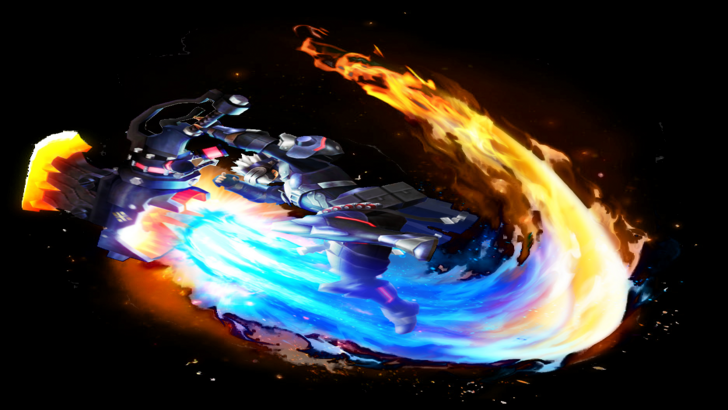
While Monster Hunter Wilds features fourteen weapons, many more exist, absent from Western releases. The series' longevity suggests future additions, potentially including ported weapons or entirely new designs.
You may also like...


